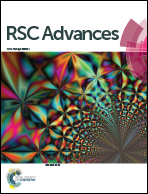1,4-Dithiolbenzene, 1,4-dimethanediolbenzene and 4-thioacetylbiphenyl molecular systems: electronic devices with possible applications in molecular electronics
Abstract
A theoretical study of the electronic transport properties of the 1,4-dithiolbenzene, 1,4-dimethanediolbenzene and 4-thioacetylbiphenyl molecules coupled to two metal contacts is carried out. The tight binding Hamiltonian approximation is applied to describe each of the molecular systems using the real space renormalization analytical method. Using Green's functions with the Landauer formalism, the transmission probability, current, shot noise and Fano factor of these three systems are calculated and analyzed in order to identify their behavior as insulators, semiconductors, or conductors, and their possible applications, such as quantum wires. The theoretical results are compared with experimental results that have been reported in the literature. The results indicate a high concordance between the results obtained by the proposed method and the experimental results.



 Please wait while we load your content...
Please wait while we load your content...